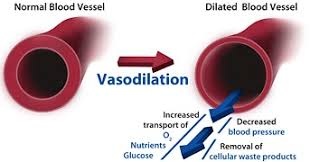“If you had to be admitted to an intensive care unit, the 'start' point from which you would atrophy all your organs is predicated on your degree of muscle mass. In other words, how long it would take before you reach multi-system organ failure and die is directly linked to your level of muscle mass“. ~ From the book Body By Science. Having more strength might make all the difference in the final outcome. One person's story here.
As we age, we lose strength and are more likely to develop medical conditions that can affect how well and how long we live. Medical conditions such as:
Immune deficiencies
Respiratory conditions
Diabetes
Heart disease
Hypertension
Obesity
Frailty
These conditions decrease our chances of surviving bouts of illness. Medications, diet, and life-style changes are vital in addressing those conditions. Exercise, specifically high intensity training, can also positively affect those conditions.
Done correctly high intensity training (HIT) safely imposes demands on the body. As a form of self-protection the musculoskeletal system, neurological system, respiratory system, cardiovascular system, and endocrine system adapt making those systems stronger. A result of those adaptations is that you will be better able to combat sickness. The changes HIT can produce:
“Acute exercise (moderate-to-vigorous intensity), less than 60 minutes is now viewed as an important immune system adjuvant to stimulate the ongoing exchange of distinct and highly active immune cell sub-types between the circulation and tissues.”1 Translation: It’s good for your immune system.
Increased respiratory volume to the degree that your doctor might even describe the improvement as remarkable.
Reduced loss in heart function caused by type 2 diabetes. One of our clients at our Austin Personal Training facility went from taking five insulin shots a day down to one.
Increased nitric oxide availability which causes the blood vessels to dilate and lowers blood pressure.
Increased strength along with a higher resting metabolism. Dieting tends to lower one's metabolism. Proper diet and a higher resting metabolism is the formula for effective fat loss.
Anyone of any age can do HIT. It is not predicated on how much exercise you can tolerate but how much is needed to produce a positive change. It takes about 30 minutes a week. Each week you do a little more than you are used to handling. Then let your body recover to come back stronger the next week. Over time those cumulative improvements will facilitate a longer active life along with enhanced resistance to injury and sickness.
1 The compelling link between physical activity and the body's defense system
Request a complimentary first session at Kelly Personal Training
Click here to schedule a session to try it yourself
We operate by appointment. Before you stop by please call us at 512-964-8787
























